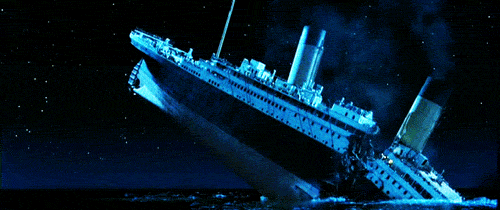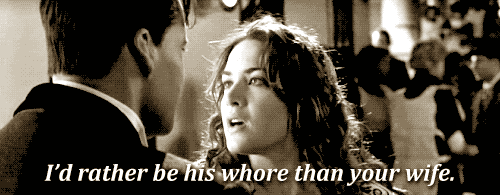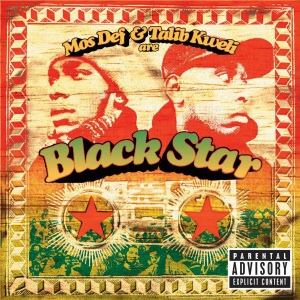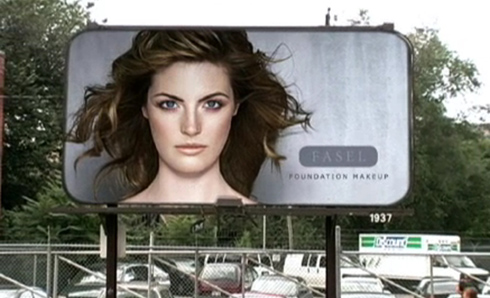Black Arts Movement Artists
To response to the ideology of
Black Power, Black Arts
Movement, as opposed to artwork simply created by an African American artist,
signified the only relevant artistic production in the struggle for African
American self-determinacy. Therefore, Black Art rejects the "art for art's
sake theory" in favor of advancing art's sociopolitical influence in the
re-definition of African American identity. Black artists, aimed to challenge
the white standard aesthetic value system, voiced their
own black culture and express ideas from the point of view of racial and ethnic
minorities was not valued by the mainstream to display the distinction of black
identity. Like other
Black Art Movement activists, Toni Morrison internalizes the main concerns of
the aesthetic. She writes about black oppression, consciousness and tradition.
Morrison’s major characters are black and they are in constant search for their
ethnic identity. Morrison tackles the destructiveness of double-consciousness
in The Bluest Eyes. She does not
avoid painful and complicated themes in her novels about black experience, and
she also chooses stylistic devices that are faithful to her African-American
heritage. Morrison implicates the importance of her culture by reflecting black
traditions of storytelling and black spoken dialogs. Similar to Morrison, black
artists in BAM displayed the ideologies and perspectives of art that center on
black culture and life, and strengthen black ideals, solidarity, and
creativity. They against the institutional
racism that through educational system, popular culture and production of items
that only cater to the whites. Black artists tried to open a new era that gives
more space to individuality and diversity and against the community as a whole
has accepted the Western values and considers differences from it a flaw. In
Morrison’s The Bluest Eyes, Pecola
and Claudia remain a meaningful contrast to each other in facing the problem of
Eurocentrism.
Aunt Jemima and the Pillsbury
Doughboy, 1963
Aunt Jemima and the Pillsbury Doughboy, a Jeff Donaldson’s oil painting, portrays
the confrontation Donaldson envisioned. Appropriating icons of American
consumer culture, the painting not only portrays a confrontation between Aunt
Jemima and the Pillsbury Doughboy, but also enacts a confrontation with popular
media imagery responsible for furthering racist stereotypes. Donaldson's
depiction of Aunt Jemima subverts the docility and subservience associated with
this image of black womanhood. Though the Pillsbury Doughboy (a figure of
oppression in the painting) restrains Aunt Jemima, her defensive stance and
fierce expression indicate that she will not concede defeat. Moreover, Aunt
Jemima’s statuesque figure implies that she holds the upper-hand in a contest
of strength with her oppressor. Pitting The Pillsbury Doughboy against Aunt
Jemima, Donaldson is simultaneously “identifying the enemy” and asserting black
America's strength to overcome racist oppression and challenge the power of
white supremacy. Notably, the subversive nature of Aunt Jemima and the Pillsbury Doughboy extends to the American
flag as well. The strips of the flag in the painting's background are bent in
an angle reminiscent of a swastika. Challenging the notions of democracy and
freedom associated with the American flag, Donaldson is drawing a jarring
connection between American racism and the recognized atrocities of Nazism
since the destructiveness of the white beauty standard to the African American
community is significant. The most notable victim is Pecola in Toni Morrison’s The Bluest Eyes, who is deeply affected by the illustrations
of white beauty around her
and believes that she is ugly and desires to “be Mary Jane,” becoming insane at
the end due to the society’s assuming of her ugliness. The Black Arts
concepts struggled to abandon Du Bois’s idea of double-consciousness since blacks
were constantly struggling toward the white culture’s ideals, even though the
dominant society disabled them from reaching the white standard of beauty.
Mirroring themselves against value structure of the oppressive white society
was depriving the blacks of their empowerment. Jeff Donaldson wanted to concentrate on solving the
problems of the African-American community from the inside, developing
awareness of the rich black heritage and gearing the community to realize its
worth. The Black Art Movement leaded the time for blacks to stop internalizing
the image of being inferior in the society as a whole and asserting the strength,
beauty, and self-esteem of blacks. Preventing the tragedy of Pecola, black
artists built up black’s own brand—Aunt Jemima to confront the white standard
beauty figures of “Mary Jane” and “Shirley Temple”. Jeff Donaldson claimed the
"next level of struggle would [have to be] confrontational," to be
black themselves and to love themselves, but not to “be Mary Jane” and “love
Mary Jane” (50).
The Black Art movement leaders tried to liberate blacks from the limitation of
white beauty standard and the fallacy that people’s value depend on their
looks.
Polarization, Claude Clark
Polarization presents the condition, names the
enemy, and directs a plan of action. Depicting a black man arm wrestling Uncle
Sam, Claude Clark presents African American life in
opposition to white America; he specifically identifies the American government
as the "enemy," and he points to direct confrontation as the mode of
socio-political struggle. While Polarization portrays a confrontation
still in action, Clark's iconography foreshadows the "American"
victor. Linking African American's struggle for civil rights with the American
Revolution, the American flag placed on the "side" of the black man
indicates his eventual victory over the "monarchy" of white America (the
crown beneath Uncle Sam's bench). Toni Morrison reveals the destructiveness of
white authority by excerpting sentence from Dick
and Jane. Like
Uncle Sam, Dick and Jane are also the creations of the white society that
determines the material values and desirable appearance for everyone. The
blacks do not have public representation in the society. There were no reading
assignments about black children who live in poverty. This manifestation of
institutional racism contributes to the black characters’ personal prejudices,
increasing their feeling of insecurities and ugliness. The Black Art Movement aimed
to change black’s situation by fight against the standard aesthetic value set
up by white people and “towards a plan of action in search of our
own roots and eventual liberation" (Claude Clark).
This painting is an assertive revision of
African American poet Paul Laurence Dunbar's most noted poem "We Wear the Mask."
We Wear the Mask
Paul Laurence Dunbar
Paul Laurence Dunbar
We wear the mask that grins and
lies,
It hides our cheeks and shades our eyes,--
This debt we pay to human guile;
With torn and bleeding hearts we smile,
And mouth with myriad subtleties.
It hides our cheeks and shades our eyes,--
This debt we pay to human guile;
With torn and bleeding hearts we smile,
And mouth with myriad subtleties.
Why should the world be overwise,
In counting all our tears and sighs?
Nay let them only see us, while
We wear the mask.
In counting all our tears and sighs?
Nay let them only see us, while
We wear the mask.
We smile, but O great Christ, our
cries
To Thee from tortured souls arise.
We sing, but oh, the clay is vile
Beneath our feet and long the mile;
But let the world dream otherwise,
We wear the mask.
To Thee from tortured souls arise.
We sing, but oh, the clay is vile
Beneath our feet and long the mile;
But let the world dream otherwise,
We wear the mask.
As depicted
in the painting If I Were Jehovah, the "mask" African
Americans historically used to shield the depth of their emotions in a racist
society is being ripped away in a full expression of outrage and determination.
The “mask man” in the painting rejects the white authority and tries to abandon
the double-consciousness. Similar to Claudia in Morrison’s The Bluest Eyes, the “mask man” does not wish to
be white, but hate the western ideal and “desires to dismember it” (20). The “mask
man” and Claudia recognize the institutional racism around the: the mass media
bombards the black community with white images of beauty, making it harder for
the minority to maintain its own identity and worth since no public
presentations of black ideals or role models are available. Like Claudia, the
activists in the Black Art movement rebelled to white institution and took off
black’s mask.
Black artists in the movement tried to distinct black
culture by using African motifs and musical beats in their art works, and they have
profoundly changed what and how America sees--in the images that flare on the
canvas as well as those that flicker on the large and small screen.
Gordon Parks
peeked through photographic and cinematic lenses to
record the travail of Black life. In the photo “Children with Doll,” the two
children represent different attitude to the white doll, just like Pecola and
Claudia in The Bluest Eyes. One is
addicted to the white doll and wants to become white girl, and one hates and
rejects white standard beauty. While
Pecola drowns herself of ugliness and worthiness and becomes a victim of the
white standard of beauty, Claudia rejects the western ideal and in somewhat
rebels like the Black Art movement activists.
Black artists used Abstract Expressionism and social
protest--and brushes, pens, invented materials and found objects--to fashion
the textures and colors of a new Black humanity that challenged racial
stereotypes.
Jazz:
(N.Y.) Savoy--1930s,
Romare Bearden
Humanity shines in Romare Bearden's
collage, Jazz: (N.Y.) Savoy-1930s, which treats the most majestic music Black
folk have created. Bearden achieves the sense of sound and rhythm associated
with jazz through irregular spatial relationships and intense lights and darks.
As in the music, what appears random—a face here and instrument there—coheres
into a structured whole. To
portray black ethnic voice like Bearden does, Toni Morrison uses old, black
storytelling traditions in The Bluest
Eyes to convey an authentic African-American experience. Morrison uses the
call-and-response style of communication that initiates from the time of slavery.
She continuously changes her focalization with narrative and writes
non-chronological revealing of Pecola’s story, aiming to resemble
African-American storytelling. Through the methods of black storytelling,
Morrison gives a voice to several silenced issues of oppression.
Black
artists and writers like Toni Morrison in Black Arts Movement were both trying
to challenge the authority of white value system and injecting new diverse
voices of minority. Their rebellion not only dealt with the racial issues but
also changed the dominant white culture situation to a new multicultural era.



























